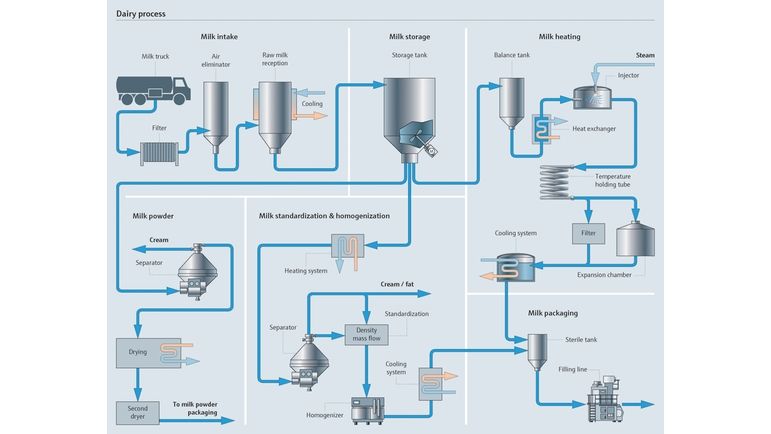How can IIoT change your daily life? Improving operational efficiency with Industrial IoT
The Industrial IoT, has its own set of unique technologies to redefine efficiency. Previous industrial revolutions have improved efficiency within specific areas of expertise. But IIoT has advanced all areas, making it arguably the most disruptive movement.
Through the first industrial revolution, steam and mechanization challenged mechanical engineers. Electricity and factories challenged operational and electrical engineering in the second, while computers and data improved automation and reduced the need for human intervention in the third.
Industry 4.0 is challenging all areas of operations, forcing all of us to evolve beyond linear expectations of improving efficiency. Data has exploded to unmanageable levels in many ways.
How can we improve operational efficiency?
Integrating computers and systems to encompass entire operations can provide deep analytics that inform proactive as well as active measures. To keep up with these changes, industries must rewire their processes with IIoT.
Of course, rewiring industries such as manufacturing is not easy as it sounds. Every development has inherent problems. Everyone has to understand and accommodate new tools, insights, and methods.
Employees, teams, and managers often feel overwhelmed by all the data, but if we don't know how to interpret and act on the information, it adds no value. How do we handle it?
Some essential questions should ask yourself and your organization:
- What exactly do we want to improve?
- What data do we need for improvement?
- How can we add that data where we need it?
- How do we interpret and visualize the data?
- How can we secure our data while making it accessible to those who need it?
When data becomes insight and insight becomes action, we can optimize the whole process within a user's daily life, and IIoT systems can scale up at any time.
Example
In the dairy industry, production generally follows this path:

Grazing > Collecting > Separating > Pasteurizing >Packaging
What exactly do we want to improve?
In milk production, pasteurizing is often the most demanding step. So let’s look at the data needed for pasteurization. Gaining insights in this step will ignite helpful developments.
What data do we need for improvement?
Pasteurization reduces viable bacteria in dairy products so that consumers don’t become sick. In a continuous pasteurization system, the milk flows from a holding tank through a thin plate that regulates the milk’s temperature. It’s important to maintain the milk at the right temperature for the right amount of time.
If the milk fails to maintain this temperature and time, the system can redirect it to a different valve for reprocessing. So dairy plants need data on the right temperatures and times for each dairy product.
Data can also reduce waste and regulate parameters such as protein, fat, and water in the production of various dairy items.
How can we add that data where we need it?
How can IIoT services help maintenance technicians and production managers in our example?
A maintenance technician can ease many daily tasks with IIoT:
- Inspecting, maintaining, repairing, and replacing parts and equipment to ensure optimal performance
- Optimizing production schedule for production, staffing, inventory, etc.
- Following food and beverage standards and regulations such as hazard analysis critical control points (HACCP) and good manufacturing practices (GMP)
- Mitigating resource waste
- Generating and archiving documentation
- Directing subordinates
A production manager can optimize and deliver key results with IIoT services:
- Improving production yields
- Monitoring technical operations
- Controlling costs and financial resources
- Maintaining optimal employee performance
- Upholding quality-control standards
- Finding opportunities to improve efficiency
IIoT services like Netilion are designed to be easy for anyone to use, to reduce training. With Netilion, employees can work efficiently, and managers can gain real-time data on their processes.
How do we interpret and visualize the data?
Operators and managers can use a ready-made IIoT solution such as Netilion Analytics, Health, Library, Value, and Inventory directly, or they can customize their insights and visualizations using an API-based service like Netilion Connect.

How can we secure our data while making it accessible to those who need it?
Data protection is very important in the food and beverage industry, since human health has to be a top priority. Checking local data protection can find the gaps in an organization's security. To implement an IIoT system, quality managers must work collaboratively with data protection officers.
Netilion provides an optimal environment for data security. If you have questions, please contact us.
Conclusion
IIoT technologies offer manufacturers the opportunity to transform their businesses. To spark improvements, you and your organization must answer these five questions:
- What exactly do we want to improve?
- What data do we need for improvement?
- How can we add that data where we need it?
- How do we interpret and visualize the data?
- How can we secure our data while making it accessible to those who need it?
You need access to the right information to make good decisions and act on them. With real-time analysis, any plants can improve efficiency and reduce, even eliminate, problems. Good data can ensure safety and quality while reducing costs.
Every industry has quality standards and safety regulations they must meet, and production must become more lean and agile than ever as pressure increases from both consumers and regulators. IIoT services such as Netilion can help.
Contact us to learn more.



